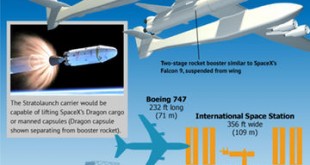Introduction
Fly-by-wire (FBW) technology has revolutionized modern aviation by replacing traditional mechanical and hydraulic control systems with digital flight control computers (DFCCs). Unlike conventional systems, which rely on direct mechanical linkages or hydraulic actuators between the pilot’s controls and the aircraft’s control surfaces, FBW systems use electronic signals to relay pilot inputs to the control surfaces via actuators. This transition has significantly enhanced aircraft performance, safety, and reliability by incorporating automation, real-time data processing, and redundancy mechanisms to prevent failures.
While FBW has introduced numerous advantages, it has also presented new challenges, particularly concerning system malfunctions and overreliance on automation. Several high-profile incidents involving automated flight control failures, such as the Boeing 737 MAX crashes, have underscored the need for continuous improvements in DFCC technology. As the aviation industry moves toward even greater levels of automation, ensuring the safety, reliability, and resilience of FBW systems remains a top priority.
The Evolution and Advantages of Fly-By-Wire Systems in Modern Aviation
Fly-by-wire (FBW) systems have transformed modern aviation by replacing traditional mechanical flight controls with an electronic interface, offering greater precision, automation, and safety enhancements. Unlike conventional systems, where pilots manipulate physical linkages like cables and pulleys to adjust control surfaces, FBW converts pilot inputs into electronic signals. These signals are processed by the aircraft’s flight control computers (FCC), which command the actuators that move control surfaces such as ailerons, rudders, and elevators. In addition to executing pilot commands, FBW systems integrate real-time sensor data to make automatic adjustments that enhance stability, efficiency, and overall flight performance. Advanced FBW systems equipped with active control sticks further enhance pilot interaction by providing “tactile cueing,” offering feedback on aerodynamic limits and aircraft handling characteristics.
Traditional mechanical and hydro-mechanical flight control systems, while reliable, have significant limitations. They require complex assemblies of levers, rods, cables, and pulleys, which not only add weight but also demand continuous monitoring and maintenance. Pilots using mechanical systems rely on direct physical feedback to assess aerodynamic conditions, which can be advantageous in certain situations but also requires greater physical effort. By contrast, FBW systems reduce pilot workload by automatically compensating for changing flight conditions and preventing unsafe maneuvers. This automation ensures that the aircraft remains within safe operational limits, reducing the risk of human error while enhancing maneuverability and performance.
One of the key benefits of FBW technology is its contribution to weight reduction and aerodynamic efficiency. By eliminating bulky mechanical components, aircraft designers can reduce structural weight, leading to improved fuel efficiency. Additionally, FBW allows for relaxed static stability, particularly in fighter jets, where increased maneuverability is crucial. By enabling smaller stabilizers and control surfaces, FBW contributes to streamlined airframe designs, reducing drag and further optimizing fuel consumption. Even in commercial aircraft, FBW facilitates advanced flight envelope protection, ensuring smoother handling and preventing excessive pilot inputs that could destabilize the aircraft.
Beyond its weight and efficiency benefits, FBW technology significantly enhances aircraft safety through redundancy and fault tolerance. Most modern FBW systems incorporate triple or quadruple redundancy, meaning multiple independent control channels operate simultaneously to ensure continuous functionality in case of component failure. This layered approach to reliability is essential in mitigating risks posed by sensor malfunctions or electronic failures. Future developments in FBW technology include fly-by-wireless, which replaces electrical wiring with wireless data transmission; fly-by-optics, which uses fiber-optic cables for faster and interference-resistant signal transmission; and power-by-wire, which replaces traditional hydraulic actuators with electrically powered alternatives, further reducing system weight and complexity.
Initially pioneered in military aviation, FBW technology made its way into commercial airliners, revolutionizing modern aircraft design. Airbus was the first to introduce full-authority FBW controls in commercial aviation with the A320 series, integrating computerized control laws for enhanced flight safety and efficiency. Boeing followed with the 777, incorporating FBW technology while maintaining traditional control yokes to retain a conventional pilot interface. Today, FBW has become a standard feature in both military and commercial aircraft, playing a crucial role in modern aviation safety, efficiency, and future technological advancements.
Key Technologies in Fly-By-Wire Systems
Digital Flight Control Computer (DFCC)
At the core of an FBW system is the Digital Flight Control Computer (DFCC), which processes pilot inputs, sensor data, and pre-programmed control laws to adjust flight surfaces in real time. The DFCC plays a crucial role in ensuring stable and efficient aircraft operation under various flight conditions.
One of the most critical aspects of DFCC design is redundancy and fault tolerance. To mitigate the risk of failure, modern aircraft incorporate multiple DFCCs operating in parallel. These computers continuously cross-check each other’s outputs, allowing the system to detect inconsistencies and isolate faulty components before they impact flight performance. This redundancy ensures that even if one control computer fails, backup systems can take over, maintaining aircraft stability and control.
Sensor Integration and Data Fusion
A key advantage of FBW systems is their ability to integrate data from multiple sensors to provide accurate and reliable flight control. These sensors play a critical role in monitoring the aircraft’s position, attitude, and environmental conditions.
Inertial Measurement Units (IMUs) provide acceleration and angular velocity data, enabling the DFCC to determine the aircraft’s orientation and movement in three-dimensional space. These units are vital for maintaining stability, especially in high-performance aircraft and military jets.
Air Data Sensors measure altitude, speed, and atmospheric conditions such as pressure and temperature. By continuously feeding real-time data into the flight control system, these sensors help ensure that the aircraft operates within safe performance limits.
Angle of Attack (AoA) Sensors are essential for stall prevention. They measure the angle between the aircraft’s wings and the oncoming airflow, allowing the flight control system to detect and correct conditions that could lead to aerodynamic stall. The importance of AoA sensors was highlighted in the Boeing 737 MAX crashes, where a faulty sensor led to unintended nose-down commands. This incident underscored the need for multiple independent AoA sensors to enhance system reliability.
Flight Control Laws and Automation
FBW systems use predefined control laws to regulate aircraft responses to pilot inputs. These control laws determine the level of automation and the degree of assistance provided to the pilot under different flight conditions.
Normal Law provides full automation, ensuring the aircraft remains within safe operating limits. It includes protections against stalls, excessive banking, and structural overloads, allowing pilots to operate the aircraft with enhanced stability and control.
Alternate Law is activated when certain failures occur, such as the loss of sensor inputs or minor system malfunctions. While it retains some protections, it removes others, requiring pilots to exercise greater caution.
Direct Law serves as the last resort in cases of severe system failures. In this mode, pilot inputs directly control flight surfaces without any automation assistance. This mode is typically used during emergency situations when all other flight control protections have been lost.
Lessons from Recent Failures in FBW Systems
Case Study 1: Boeing 737 MAX MCAS Incident
One of the most significant failures in FBW technology occurred with the Maneuvering Characteristics Augmentation System (MCAS) in the Boeing 737 MAX. The MCAS was designed to automatically adjust the aircraft’s pitch under certain flight conditions. However, the system relied on a single Angle of Attack (AoA) sensor, making it highly vulnerable to erroneous data.
When the faulty AoA sensor provided incorrect readings, the MCAS repeatedly issued nose-down commands, forcing the aircraft into an uncontrollable descent. Since the system overrode pilot inputs and lacked sufficient redundancy, pilots were unable to recover in time, leading to two fatal crashes. The key lesson from this incident is the importance of sensor redundancy and robust pilot override mechanisms. Modern FBW systems must incorporate multiple independent sensors to prevent a single-point failure from compromising flight safety.
Case Study 2: V-22 Osprey Tiltrotor Aircraft Failures
The V-22 Osprey, a military tiltrotor aircraft, experienced failures related to metal fatigue and gearbox malfunctions in its fly-by-wire system. These issues led to several near-crashes and operational challenges. Investigations revealed that structural weaknesses in the proprotor gearbox contributed to flight instabilities.
This case highlights the need for continuous monitoring of mechanical components within FBW systems. Advanced fault detection algorithms and real-time diagnostic tools can help identify early signs of mechanical failure, allowing maintenance crews to address potential issues before they escalate into critical failures.
Enhancing DFCC and Fly-By-Wire Safety
To improve the safety and reliability of FBW systems, several key advancements are being pursued in both commercial and military aviation.
One critical improvement is increased sensor redundancy. By incorporating multiple independent sensors for critical flight parameters, aircraft manufacturers can minimize the risk of erroneous data leading to incorrect control commands. This approach ensures that no single sensor failure can compromise the stability of the flight control system.
Another major advancement is the development of AI-driven diagnostics and fault detection. Modern aircraft are increasingly integrating artificial intelligence (AI) algorithms that can analyze vast amounts of flight data in real time. These AI systems can detect anomalies, predict potential failures, and recommend corrective actions before a problem becomes critical. By leveraging machine learning, aviation engineers can create more adaptive and resilient FBW systems.
Pilot training also plays a crucial role in ensuring the effective use of FBW systems. Simulator-based training programs are being enhanced to prepare pilots for potential failures in digital flight control systems. By exposing pilots to realistic failure scenarios, these training programs help them develop the skills needed to manage emergencies and override automated flight control when necessary.
Conclusion
Fly-by-wire technology has significantly improved the efficiency, safety, and reliability of modern aircraft. However, as aviation continues to embrace increasing levels of automation, ensuring the robustness of digital flight control systems remains a critical challenge. Recent incidents, such as the Boeing 737 MAX crashes and the V-22 Osprey failures, have highlighted vulnerabilities in FBW design, emphasizing the need for redundant sensor architectures, advanced fault detection, and improved pilot training.
The future of DFCC technology will likely involve greater integration of artificial intelligence, real-time diagnostics, and human-machine collaboration. By addressing the lessons learned from past failures and continuing to enhance safety mechanisms, the aviation industry can ensure that FBW systems evolve to provide even higher levels of reliability and performance in the years ahead.
References and Resources also include;
 International Defense Security & Technology Your trusted Source for News, Research and Analysis
International Defense Security & Technology Your trusted Source for News, Research and Analysis


